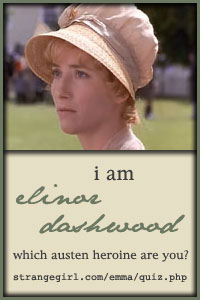 Considered by many to be a master of short stories, Flannery O'Connor marks the end of the Southern Literary Renaissance that occurred from the 1920s through the early '60s. Along with other writers, including William Faulkner, Caroline Gordon, Tennessee Williams, Robert Penn Warren and Walker Percy, O'Connor helped change the way that the South was portrayed in American literature. Her stories, stripped of nostalgia and sentimentalism, are portraits of raw human nature and the overwhelming need for grace. A Good Man is Hard to Find and Other Stories is a collection of 10 of these portraits that force the characters and the reader to see themselves as they really are and to accept their need for God.
Considered by many to be a master of short stories, Flannery O'Connor marks the end of the Southern Literary Renaissance that occurred from the 1920s through the early '60s. Along with other writers, including William Faulkner, Caroline Gordon, Tennessee Williams, Robert Penn Warren and Walker Percy, O'Connor helped change the way that the South was portrayed in American literature. Her stories, stripped of nostalgia and sentimentalism, are portraits of raw human nature and the overwhelming need for grace. A Good Man is Hard to Find and Other Stories is a collection of 10 of these portraits that force the characters and the reader to see themselves as they really are and to accept their need for God.As someone who's main literary passion is 19th century British literature, I was a little hesitant to read these stories, especially considering some of the things that are associated with them (more on that later). Also, short stories have never been my "thing" so that was a bit of a put off as well. Despite all of this, I was pleasantly surprised by what I found between the covers. First off, O'Connor is a phenomenal writer. Her characters are complete and real and her insight into Southern culture is wonderful. The humor in the stories was also a surprise, and it was especially funny for someone who has lived in the South all of their life. Anybody who has ridden on I-95 can identify with the numerous signs advertising "Red Sammy's Famous BBQ" for miles before and after the actual location. And I found the fact that the Grandmother in the title story dressed up for the trip so that in case they were found dead on the side of the road, everyone would know that she was a lady to be hilarious, mainly since that reminds me of my own grandma. It was little comments like these that lightened up the overall tone of the stories.
Which brings us to the main reason that I hesitated in reading these at first. When you look up reviews for O'Connor's works, most of the words that are used are "violent", "grotesque", "dark" and "disturbing". Not being one for blood and gore, this initially made me nervous. But though dark and violent things happen to the characters, the stories themselves are not. O'Connor doesn't use the violence to sensationalise the stories, but rather as a way to open up her characters to Divine grace. In The Habit of Being, a collection of O'Connor's letters, she writes "The stories are hard but they are hard because there is nothing harder or less sentimental than Christian realism... when I see these stories described as horror stories I am always amused because the reviewer always has hold of the wrong horror." Throughout these stories, O'Connor addresses the idea that being a "good country person" makes you good enough. Many of the main characters see themselves as better than other people (blacks, foreigners and poor people), yet still claim to be "good Christians" who give unselfishly. It is only through violence and darkness that they awaken to the fact that they, like every human on this earth, are in desperate need of grace.
That is probably the most prominent theme of all of the stories in this collection, though it was not always clear exactly how the characters came to that realization. I especially found A Temple of the Holy Ghost and A Late Encounter with the Enemy to be somewhat confusing. But most of the stories are pretty clear, with my favorites being The River and The Displaced Person.
If anything, O'Connor's stories should make you step back and think. I know that for me, it caused me to look at myself very hard and to see just what I am without the grace of God, and believe me, it was more grotesque, dark and disturbing than anything you'll find in the stories. So, if you're up for something different in your literary diet, this is something that I would recommend. You'll never look at yourself the same way again.



















